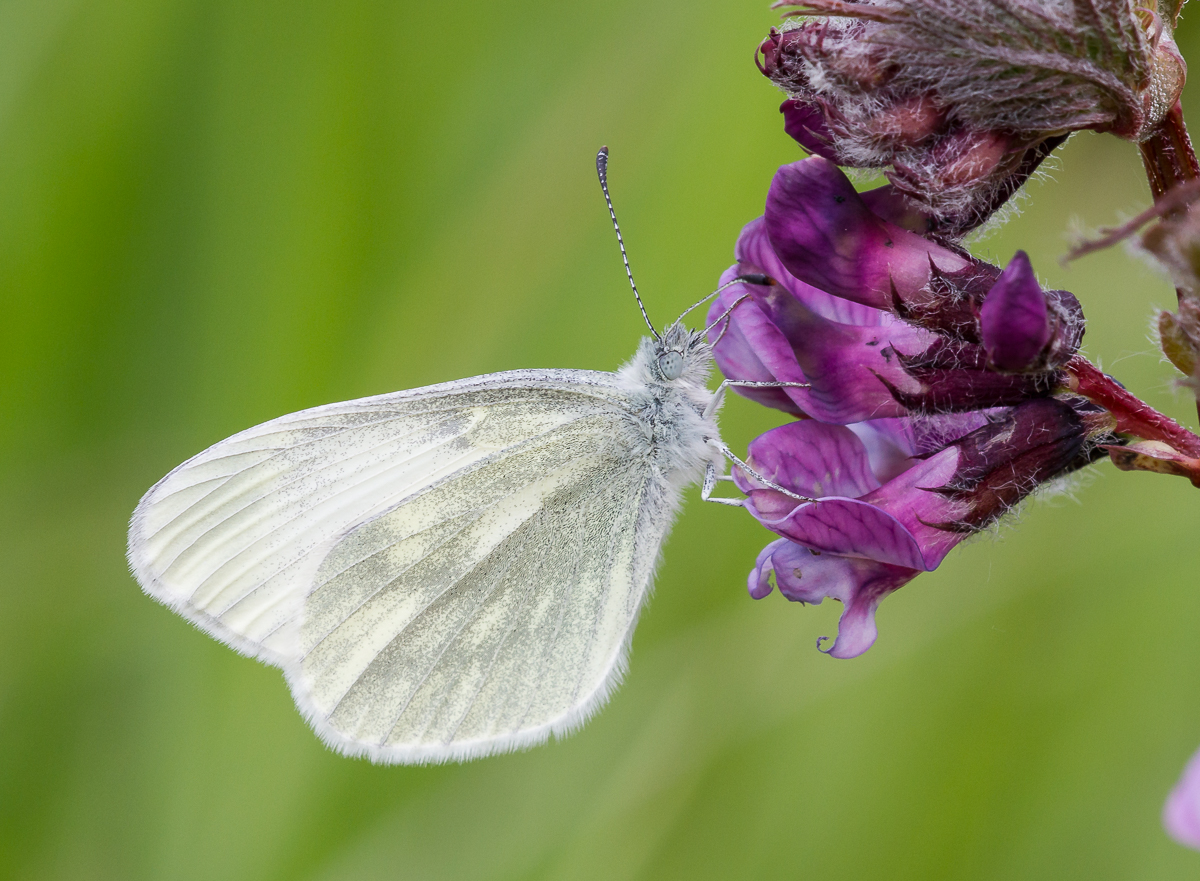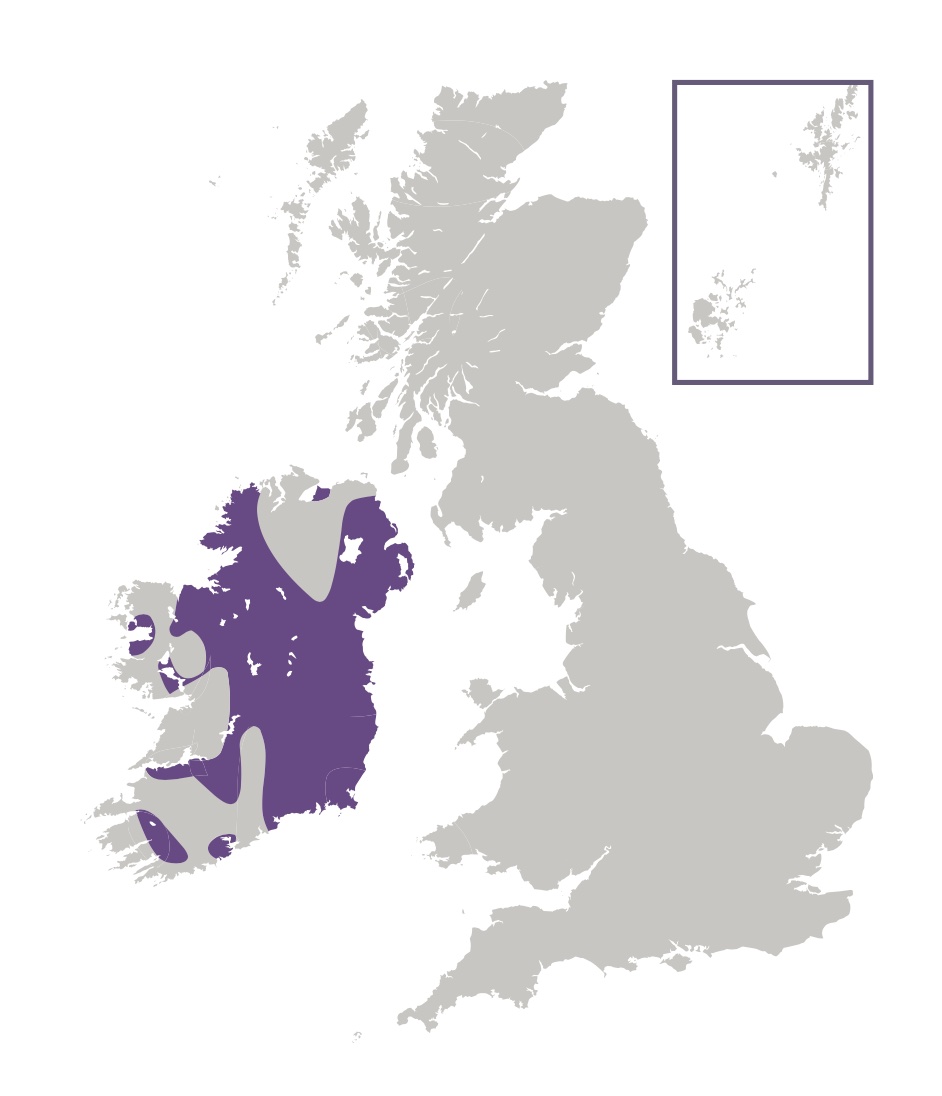
Photo © Peter Eeles
This is our most recently-discovered butterfly, being almost identical to the Wood White and originally described as Réal's Wood White. However, in 2011 Réal's Wood White was itself split, resulting in another new species - the Cryptic Wood White, a species that is found across Ireland with the exception of the Burren. This species share many characteristics with the Wood White, in terms of both appearance and behaviour. Like the Wood White, adults always rest with their wings closed although, in flight, the male can be distinguished from the female by a black spot at the tip of the forewings that is greatly reduced in the female. This species is only found in Ireland in the British Isles, where it is widespread. Current evidence suggests that there is no overlap in distribution between the Wood White and Cryptic Wood White; the Wood White being confined to areas of the Burren limestone district in Clare and South-east Galway in the west of Ireland.
Males can be found patrolling for females, rarely stopping to rest or feed, especially in sunny weather. On dull days, the butterfly will rest on the underside of a leaf with its wings closed and, when disturbed, will fly into thick undergrowth. Like the Wood White, the courtship of this butterfly is an amazing spectacle. Male and female face each other with wings closed and intermittently flash open their wings. At the same time, the male waves his proboscis and white-tipped antennae either side of the female's head. If the female is receptive to these signals, the female bends her abdomen toward the male and the pair mate, staying coupled for around 30 minutes.

Unlike the Wood White, this butterfly is found in more-open habitats, such as scrubby grassland, abandoned quarries, hedgerows and roadside verges. Foodplants include various vetches and trefoils.
Adults feed primarily on Bush Vetch (Vicia sepium). Common Bird's-foot-trefoil (Lotus corniculatus), Common Vetch (Vicia sativa), Germander Speedwell (Veronica chamaedrys), Hoary Willowherb (Epilobium parviflorum), Meadow Buttercup (Ranunculus acris), Meadow Vetchling (Lathyrus pratensis), Ragged-Robin (Silene flos-cuculi), Red Clover (Trifolium pratense) and Tufted Vetch (Vicia cracca) are also used.
The primary larval foodplants are Common Bird's-foot-trefoil (Lotus corniculatus), Greater Bird's-foot-trefoil (Lotus pedunculatus), Meadow Vetchling (Lathyrus pratensis) and Tufted Vetch (Vicia cracca).
